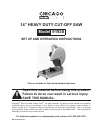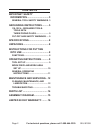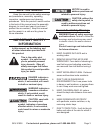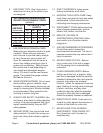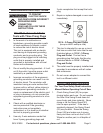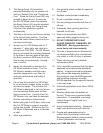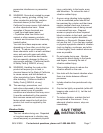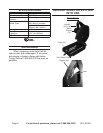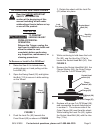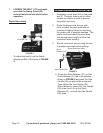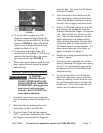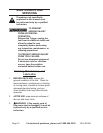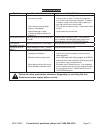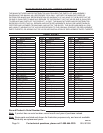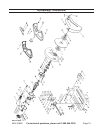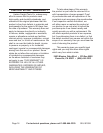Page 6 For technical questions, please call 1-800-444-3353. SKU 91938
The Swing Guard (53) should be 2.
retracted manually only for special cuts
such as “Pocket Cuts) and “Compound
Cuts.” Raise the Swing Guard (53) only
enough to begin the cut. As soon as
the Cut-Off Wheel enters the material,
the Swing Guard (53) must be released.
For all other sawing, the Swing Guard
(53) should be allowed to operate
automatically.
The Saw is not to be used for any cutting 3.
in the locked down position. The Saw
should be locked down position only for
carrying and storage.
Always use Cut-Off Wheels with a 14” 4.
diameter, 1” arbor hole, and rated at a
minimum of 3750 RPM. Cut-Off Wheels
that do not match the mounting hardware
of the Saw or that are rated at less than
the Saw’s maximum RPM may y off the
Saw or may run eccentrically, causing
loss of control.
Never use damaged or incorrect Cut-5.
Off Wheel washers or bolts. The Cut-
Off Wheel’s washers and bolts were
specially designed for your Saw, for
optimum performance and safety of
operation.
Do not use the included Cut-Off Wheel 6.
to cut aluminum, copper, brass, or other
non-ferrous metals. The included Cut-
Off Wheel is designed to cut only ferrous
(iron containing) metals such as steel
alloys and cast iron. If using other Cut-
Off Wheels, only use them on materials
that the manufacturer recommends.
Before using the Cut-Off Saw, make sure 7.
the Cut-Off Wheel is properly mounted
on the saw spindle. Make sure the Cut-
Off Wheel is balanced and is not broken
or bent.
Wear eye protection.8.
Use grinding wheel suitable for speed of 9.
cut-off saw.
Replace cracked wheel immediately.10.
Do not overtighten wheel nut.11.
Use only anges furnished with the cut-12.
off saw.
Frequently clean grinding dust from 13.
beneath cut-off saw.
Wear a full face shield over ANSI-14.
approved safety goggles during use.
DO NOT OPERATE WITH ANY 15.
GUARD DISABLED, DAMAGED, OR
REMOVED. Moving guards must
move freely and close instantly.
The use of accessories or attachments 16.
not recommended by the manufacturer
may result in a risk of injury to persons.
When servicing use only identical 17.
replacement parts.
Only use safety equipment that has been 18.
approved by an appropriate standards
agency. Unapproved safety equipment
may not provide adequate protection.
Eye protection must be ANSI-approved
and breathing protection must be
NIOSH-approved for the specic hazards
in the work area.
Industrial applications must follow OSHA 19.
guidelines.
Maintain labels and nameplates on 20.
the tool. These carry important safety
information. If unreadable or missing,
contact Harbor Freight Tools for a
replacement.
Avoid unintentional starting. Prepare to 21.
begin work before turning on the tool.
People with pacemakers should 22.
consult their physician(s) before use.
Electromagnetic elds in close proximity
to heart pacemaker could cause



